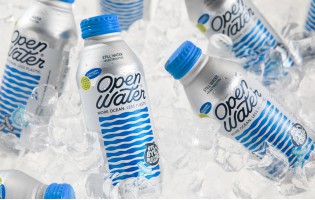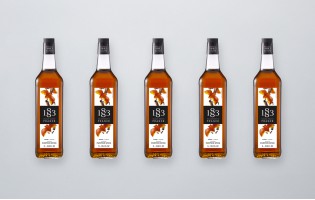
A pig’s role on the farm was once to eat table scraps; Baldor’s initiative revives that.
Thomas McQuillan has started seeing food waste everywhere, and it makes sense. This is the guy in charge of eliminating all food waste from Baldor, the massive produce supplier for our city’s commercial kitchens. Now when he eats at restaurants, dinner parties, even his own kitchen, the former construction magnate is near-obsessive about keeping food from the wastebin. Like the copy editor who wants to fix every misspelled subway ad, McQuillan struggles to shut down his work brain after hours.
“It’s become kind of a mania,” he admits with a laugh.

If reducing food waste is a mania, it’s an of-the-moment one. As the public has come to learn that 40 percent of edible food gets tossed—at a time when we could soon face an epic food shortage—there’s been a collective focal shift. New apps pop up daily; chefs and supermarkets trumpet their low-waste initiatives. Google searches of “food waste” are through the roof.
Baldor, one of the Northeast’s largest produce distributors, decided last year to eliminate its food wastage. Many companies are talking this kind of game now, but Baldor is notable for its level of ambition. The goal is nothing short of total: absolutely nothing sent to the landfills. We’re not just talking about selling some ugly tomatoes, or apples with nicks and dings. This is mango pits and asparagus ends and banana peels and the pointy parts of a pineapple. It’s a root-to-stem approach, writ quite large: Baldor processes well over a quarter million pounds of produce every week.

Watching McQuillan zip around Baldor’s gigantic Bronx production facility, you see a lot of smiling faces. There are more than 1,300 employees at the facility; McQuillan says he knows most of them by name. As he navigates the 172,000-square-foot structure, in the office and on the production floor, he gives out fist bumps, handshakes, wisecracks and pleasantries. The man is well-liked.
But McQuillan’s popularity is not a peripheral detail to this story. A large part of why Baldor’s initiative has progressed so far in a very short timeframe (the program was announced in December) is how invested its employees are. From the CEO to the rank and file, McQuillan has managed to shore up a remarkable amount of support for his efforts.
“Something on this scale wouldn’t work without a team effort,” he notes. “It is so cool how we all have a stake in this.”

Baldor’s waste reduction/elimination strategy is multi-pronged. The preferred goal is for any scraps (Baldor calls them SparCs—more on that later) and imperfect produce to be consumed by humans. This can take the form of selling produce “seconds” at a highly reduced rate in the employee store. It can be accomplished with Baldor’s “veggie blend”: a dehydrated powder made of 20 vegetables that’s being tested by a handful of local chefs. And DC-based Misfit Juicery is sourcing Baldor food trim for its fancy beverages. Next in the SparCs hierarchy is consumption by animals: feeding peels and pits to farm critters. Twice a week, Baldor sends 8,000 pounds of produce remnants upstate, to Flying Pig Farms. It’s parsnip peels, iceberg lettuce cores, strawberry tops, celery bottoms—stuff we won’t eat but pigs will. “I’m trying to get my herd back to the traditional role of consuming surplus ag products,” says Mike Yezzi of Flying Pig. “The pig’s role on a farm was once to eat table scraps, then convert those calories into meat and fat.”
Last resort before the landfill: compost or anaerobic digestion. There are organic items you shouldn’t feed pigs (such as green potatoes) or that they just won’t eat; these can end up as nutrient-rich soil or energy. Consumption by human or animal will always be Baldor’s preference. Unfortunately Flying Pigs isn’t vast enough to require scraps on the scale Baldor produces; the company is on the hunt for more partner farms.

Baldor’s waste hierarchy is human consumption first, then farm animals, then compost.
It should be noted that the entire SparCs initiative started with a phone call from Blue Hill Stone Barns. Dan Barber and Adam Kaye were planning their now-mythical feast, WastED, that showcased a variety of trash-bound food remnants. Baldor supplied things like onion skins and carrot ribbons; it got McQuillan thinking. Akin to a chef cooking nose-to-tail style, he found it wasn’t just a noble challenge, but something that made economic sense. Instead of paying to dispose of the waste stream, Baldor could convert it into profits (however modest). “[Baldor’s] probably going to make a fortune off this,” deadpans chef Bill Telepan. “Somebody’s putting their kids through college.”

Telepan is one of the chefs testing out Baldor’s veggie blend, a proprietary recipe the company developed at Drexel University in Philadelphia. After months of taste-testing and recipe development in the food lab, this nutrient-packed powder is ready for Manhattan. Chef Mona James of the Palm restaurant in Chelsea has mixed it into gnocchi flour, added it to the crust on a scallops special, dusted it on top of her herb biscuits. “This reminds me of the pioneer days, when you found a use for everything because you couldn’t afford not to,” says James. Ultimately Baldor hopes to stock the blend on grocery store shelves.
Oh, about that name “SparCs.” Kooky capitalization aside, the term has a very practical purpose. It’s meant to remove the stigma many consumers still associate with food scraps, as in: “I’m not about to eat trash.”

By flipping the word “scraps” backwards, Baldor hopes to flip people’s perceptions. “It’s like [dairy waste product] acid whey,” says McQuillan. “That stuff had such a bad perception for years; now you’ve got people turning it into sports drinks.”
As testament to how deep the zero-waste fever has struck, McQuillan has recently been turning the spotlight on Baldor’s peripheral waste products. “We’re looking for pain points at every level of the company,” he says. All of their wooden pallets are now being reused, for instance, even if they have to be totally rebuilt. But why stop there? How about the colored plastic banding around the pallets? Or the plastic sheeting that lines the bottom of produce-carrying rail cars? These oft-ignored by-products are now 100 percent recycled at Baldor.

But at its core, this is mostly about the food. McQuillan knows this well: His best tactic for getting clients and employees on board is to whip them up a SparCs-based meal. At home, he’s been putting the veggie blend in heavy rotation—“I don’t need any other spices!”—but for work meetings he’s been known to whip up a delicious eggplant dish, maybe some soup.
The uncontested crowd favorite, though, is a casserole made with sweet potato skins; McQuillan has fielded many a recipe request. “That’s how I hook ’em,” he laughs. “You start by showing people how delicious this stuff can be.”

























































































































































































































 Fruits
Fruits  Organics
Organics  Vegetables
Vegetables  Fresh Cuts
Fresh Cuts  Meat & Poultry
Meat & Poultry  Grocery
Grocery  Dairy
Dairy  Cheese
Cheese  Bakery
Bakery  Seafood
Seafood 